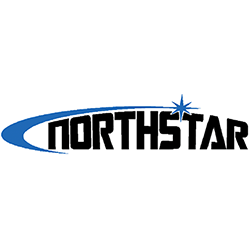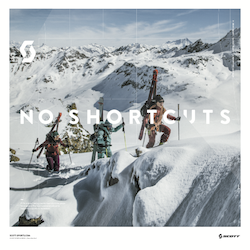Forecast for the Ogden Area Mountains

Thursday morning, March 14, 2013
A MODERATE danger for wet avalanches this morning will increase to CONSIDERABLE with day time heating. Both natural and human triggered wet avalanches are possible - wet sluffs, wet slabs, isolated glide avalanches, cornices breaking off, and snow sliding off roofs. It is a poor day for mountaineering; also avoid travel in run out zones beneath avalanche paths.
 Special Announcements
Special Announcements
- Tonight: Come sit and talk with Bruce Tremper about current conditions at the last free Fireside Avalanche Chat at Black Diamond Store at 7:30 pm.
- Donations from users like you are critical to keeping these advisories coming. Learn why HERE.
- Ski the night away at the 12 Hours of Canyons. On March 29 at 7 pm, we will start skiing at Canyons and we won’t stop until breakfast goes on the table at 7 am. Have you ever skied all night by headlamp? Do you think you could? How much vertical could you rack up?
 Weather and Snow
Weather and Snow
The high pressure strangle hold on northern Utah continues, and temperatures this morning are in the upper 30s to mid-40s, with the warmest temperatures at the mid-elevations. High thin clouds remained overhead for most of the night, and the southwesterly winds are averaging less than 15 mph. All but the highest elevation, shaded northerly facing slopes have a wet snow surface, and the snow on many mid and low elevation slopes is punchy, if not soggy, and wet to the ground.
 Recent Avalanches
Recent Avalanches
Widespread wet snow sluffs, both natural and skier released, occurred yesterday, with east through south facing slopes the most active. Many of these gouged down, entraining extra snow, and were large enough to carry, injure and/or bury a person. Long runners included Spring Creek in the Ogden area mountains, and slides in Slide Canyon, Provo mountains. A cornice drop in north facing Sliver Fork triggered a small slab avalanche, about 75’ wide by 18” deep.
Wet Snow
Description
It is not a particularly good day to be out in the backcountry – a non-freezing night followed by the hottest day of the year is making the snow pack wet, weak and unstable. Natural avalanches are possible and human triggered wet slides likely on steep slopes of many aspects and elevations. Don’t be fooled by the packed snow on trails, boots packs and roads – once you get off this artificially dense snow, you can notice how wet the snow really is. Wet avalanche danger today includes:
- Wet loose avalanches – these sluffs are gouging down, entraining extra snow. They can run long distances in confined tracks or gullies.
- Wet slabs – the old faceted layers in the snowpack add to the chance of wet slabs, especially on northwest through easterly facing slopes
- Glide cracks will continue to open, and can release at any time. Avoid crossing beneath these cracks.
- Roof-a-lanches – roofs are shedding their snow and ice into deep, dense piles. .
- Cornices are sensitive, drooping, and falling, possibly triggering a slide.
- While there is no snow on low elevation south through west facing slopes, a few long running naturals may travel down gullies to dirt trails.
Additional Information
Hot and dry weather will continue through Friday. Temperatures today will soar to near 60 at 8,000’ and close to 40.along the high ridgelines’. The southwesterly winds will be light, averaging less than 15 mph, with the highest peaks gusting into the 20s. Occasional high thin clouds will drift over northern Utah. After another partly cloudy, nonfreezing night, tomorrow will be slightly cooler by a few degrees. Weak weather disturbances Saturday and Sunday will bring clouds and cooler temperatures for a few days.
General Announcements
Go to http://www.backcountry.com/utah-avalanche-center to get tickets from our partners at Beaver Mountain, Canyons, Sundance, and Wolf Mountain. All proceeds benefit the Utah Avalanche Center.
If you trigger an avalanche in the backcountry - especially if you are adjacent to a ski area – please call the following teams to alert them to the slide and whether anyone is missing or not. Rescue teams can be exposed to significant hazard when responding to avalanches, and do not want to do so when unneeded. Thanks.
Salt Lake and Park City – Alta Central (801-742-2033), Canyons Resort Dispatch (435-615-3322)
Ogden – Snowbasin Patrol Dispatch (801-620-1017)
Powder Mountain Ski Patrol Dispatch (801-745-3772 ex 123)
Provo – Sundance Patrol Dispatch (801-223-4150)
Dawn Patrol Forecast Hotline, updated by 05:30: 888-999-4019 option 8.
Twitter Updates for your mobile phone - DETAILS
Daily observations are frequently posted by 10 pm each evening.
Subscribe to the daily avalanche advisory e-mail click HERE.
UDOT canyon closures UDOT at (801) 975-4838Wasatch Powderbird Guides does daily updates about where they'll be operating on this blog http://powderbird.blogspot.com/ .Remember your information can save lives. If you see anything we should know about, please participate in the creation of our own community avalanche advisory by submitting snow and avalanche conditions. You can also call us at 801-524-5304 or 800-662-4140, email by clicking HERE, or include #utavy in your tweet.
Donate to your favorite non-profit –The Friends of the Utah Avalanche Center. The UAC depends on contributions from users like you to support our work.
For a print version of this advisory click HERE.
This advisory is produced by the U.S. Forest Service, which is solely responsible for its content. It describes only general avalanche conditions and local variations always exist. Specific terrain and route finding decisions should always be based on skills learned in a field-based avalanche class.




